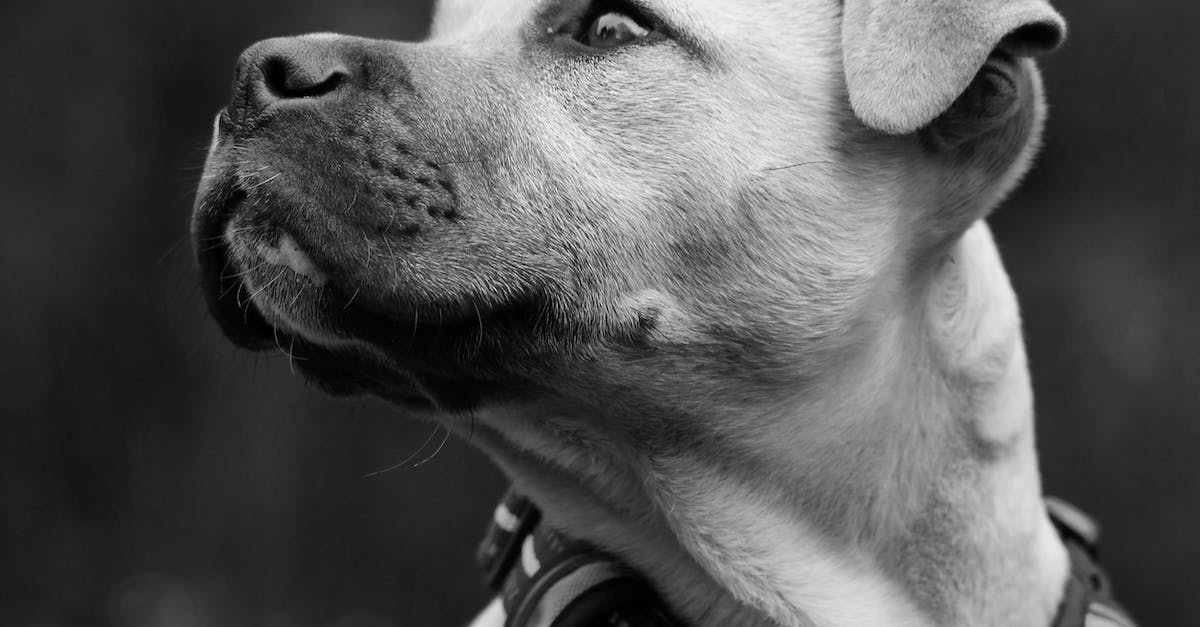
Dogs have long been known as man’s best friend, but have you ever wondered how they perceive the world around them? One common myth is that dogs see the world in just black and white. But is this really true? In this article, we will explore the fascinating topic of canine vision and debunk some misconceptions along the way. So, let’s dive in and discover the truth about how dogs see!
Understanding Canine Color Perception
Contrary to popular belief, dogs do not see the world in black and white. While humans perceive a wide spectrum of colors, dogs have a more limited color vision. Dogs lack certain light receptors in their eyes that allow humans to see certain colors, particularly in the red and green range. However, they can still see colors like yellow and blue. This means that what appears as red or orange to us may simply be perceived as different shades of tan by dogs. For example, a bright orange ball lying in green grass may look like a tan ball in a different shade of tan grass to a dog.
The Science Behind Dogs’ Color Vision
To understand dogs’ color vision, researchers have conducted various experiments. One such experiment involved training dogs to touch a lit-up color disc with their nose to receive a treat. They were then trained to touch a disc that was a different color from the others. When the well-trained dogs couldn’t differentiate between the colors, it became evident that they could only see yellow and blue. This experiment revealed that dogs have fewer types of cone-shaped cells responsible for color vision compared to humans, who have three types.
Visual Acuity in Dogs

Not only do dogs have a different color perception, but they also see the world differently in terms of visual acuity. Tests have shown that dogs’ vision is generally more blurry than that of humans, both in terms of structure and function. While humans typically have 20/20 vision, dogs’ visual acuity is closer to 20/75. This means that what a person with normal vision can see from 75 feet away, a dog would need to be only 20 feet away to see as clearly. However, it’s important to note that dogs’ visual acuity does not significantly impact their daily lives since they don’t rely on reading or other visually demanding tasks like humans do.
Breed Variations in Canine Vision
There is likely a considerable variation in visual ability among different dog breeds. Over the years, breeders have selectively bred sight-hunting dogs like greyhounds to have better vision compared to breeds like bulldogs. This selective breeding has resulted in some breeds having more enhanced visual capabilities than others.
Dogs’ Night Vision
While dogs may not see the same range of colors as humans, they have certain advantages when it comes to low-light conditions. Dogs’ retinas have a higher percentage and type of rod cells, which are more adept at detecting motion in dim light compared to cone cells. Additionally, dogs have a reflective tissue layer called tapetum lucidum at the back of their eyes. This layer collects and concentrates available light, aiding their vision in dark environments. That’s why dogs often appear to have glowing eyes in the dark.
Evolution of Canine Vision
The differences in color perception and visual acuity between dogs and humans can be attributed to evolution. Many animals, including dogs, cats, and foxes, have a similar type of vision that prioritizes motion detection in low-light conditions. This type of vision is essential for hunters who need to track their nocturnal prey. As mammals adapted to forage and hunt in twilight or dark conditions, they sacrificed the ability to see a wide range of colors, unlike most birds, reptiles, and primates. Humans, on the other hand, retained color vision and better visual acuity as they didn’t evolve to be active during nighttime.

Dogs’ Other Enhanced Senses
Although dogs may not perceive colors as vividly as humans, they have other senses that are far more developed. Dogs have an exceptional sense of hearing, allowing them to detect higher-pitched sounds from farther away compared to humans. Additionally, their sense of smell is extraordinarily powerful. While dogs may struggle to see an object clearly, they can easily locate it by relying on their keen sense of smell. So, while they may not experience the full range of colors, dogs have unique sensory abilities that make up for it.
Conclusion
In conclusion, dogs do not see the world in just black and white. While their color perception is more limited compared to humans, dogs can still see colors like yellow and blue. Their visual acuity is generally not as sharp as humans, but they possess other enhanced senses such as hearing and smell. The differences in canine vision can be attributed to evolutionary adaptations that prioritize motion detection and hunting in low-light conditions. So, the next time you play fetch with your furry friend, remember that they may see the world a little differently than you do, but their unique abilities make them truly remarkable companions.
Note: For additional information, consult the reference articles listed below.
References:
